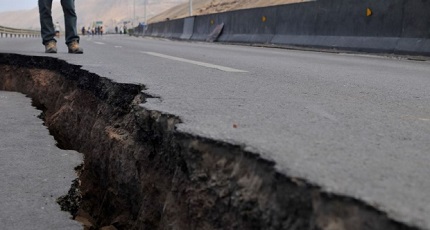Cases & Voices
Researchers from Chilean universities develop method for predicting earthquakes

Chile is one of the most seismic countries in the world, which is why its scientists and researchers work hard to understand and deal with these natural phenomena that have caused so much damage to the country throughout its history and, more profoundly, in the last decade. And in 2018, after three years of data collection and analysis, a team of researchers from the University of Chile (linked to the Chilean advanced network REUNA) and Tarapacá, made a breakthrough that could result in a in this direction: a mechanism of prediction of earthquakes.
In analyzing the behavior of the magnetic field in the Earth's southern hemisphere, the team led by Enrique Cordaro, a researcher at the Faculty of Physical and Mathematical Sciences of the University of Chile and the Faculty of Engineering of the Autonomous University of Chile, found an anomaly that, after approximately 30 days of its occurrence, is followed by a major earthquake in some sector of the planet.
"From our three observatories of cosmic radiation and geomagnetism in Putre, Santiago, and Antarctica, we measured the incoming radiation particles and the magnetic field with magnetometers installed on the ground. We observed abrupt changes in the near magnetic field before the movements which generated oscillations that ended only 2 to 6 hours before the event [earthquake] occurred", explains Cordaro. Similar behavior was found in the earthquakes of Maule (Chile) in 2010, Sumatra (Indonesia) in 2004 and Tohoku (Japan) in 2011. In all three cases, every time an earthquake could occur, the magnetic field fell. After a while, the earthquake actually occurred.
According to the evidence, terrestrial magnetism and the occurrence of earthquakes are strongly linked. According to the researcher, this discovery is a first step that opens the possibility of predicting earthquakes. "Now, together with our co-investigator, Dr. David Laroze, and our thesis researcher, Patricio Venega, from the Department of Geophysics of the University of Chile, we want to deepen this relationship between geomagnetism and earthquakes, and so we are analyzing the last three major earthquakes in Chile, Maule in 2010 (8.8 degrees on the Richter scale), Iquique 2014 (8.2) and Illapel 2015 (8.3). The idea now is to seek the necessary funding to keep the observatory operation operating continuously", explains the researcher.
The complete study, which drew the attention of the Chilean and international media, is entitled "Latitudinal variation rate of geomagnetic cutoff rigidity in the active Chilean convergent margin" and was published in the prestigious German magazine Annales Geophysicae, being available for consultation at https://www.ann-geophys.net/36/275/2018/




